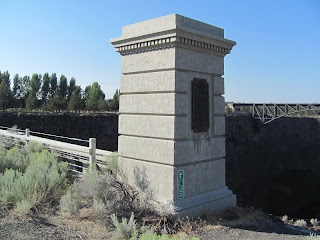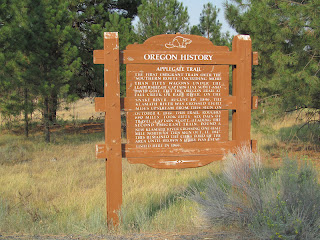After a buffet breakfast at the Quality Inn in Bend I packed the car and headed for Vancouver, Washington. I found three caches: one Earthcache and two Traditional Caches this morning. I found caches on DELORME pages 43 and 37. I was no longer in the mood for caching. I was tired and just wanted to get home. I tried to find a cache this afternoon near Mt. Hood but it was a DNF.
I stopped at Peter Skene Ogden Park to get some photographs and do an Earthcache. It was already very hot by midmorning.
Marker Text: This park is named for Peter Skene Ogden, 1793-1854. In the fall of 1825, Ogden led a Hudson’s Bay Company trapping party on the first recorded journey into central Oregon, crossing the country to the north and east into the Crooked River valley not far above here. He was in the vicinity again in 1826 bound for the Harney Basin and the Klamath region where he discovered Mount Shasta. Ogden was an important figure in the early fur trade and ranged over all the west. He rescued the survivors of the Whitman Massacre.
Located on Hwy 26 amid the high desert bluffs of Warm Springs, Indian Head Casino beaconed me to check it out and perhaps try my luck at one of the 500 slot machines. I join the Players Club and was given $5.00 to play. I could not figure out how to do it or if I wanted to do it. I got a free tall cup of hot chocolate. Time to hit the road again!
I stopped at Laurel Hill to take a few photos of Mt. Hood.
I had a delicious Afternoon Tea at Chariteas in Sandy, Oregon. I sat at my favorite table by the window.
It was good to get back home and be able to sleep in my
own bed. Altogether I found 11 Virtuals, four Earthcaches, seven Benchmarks, and 31 Caches.

























































